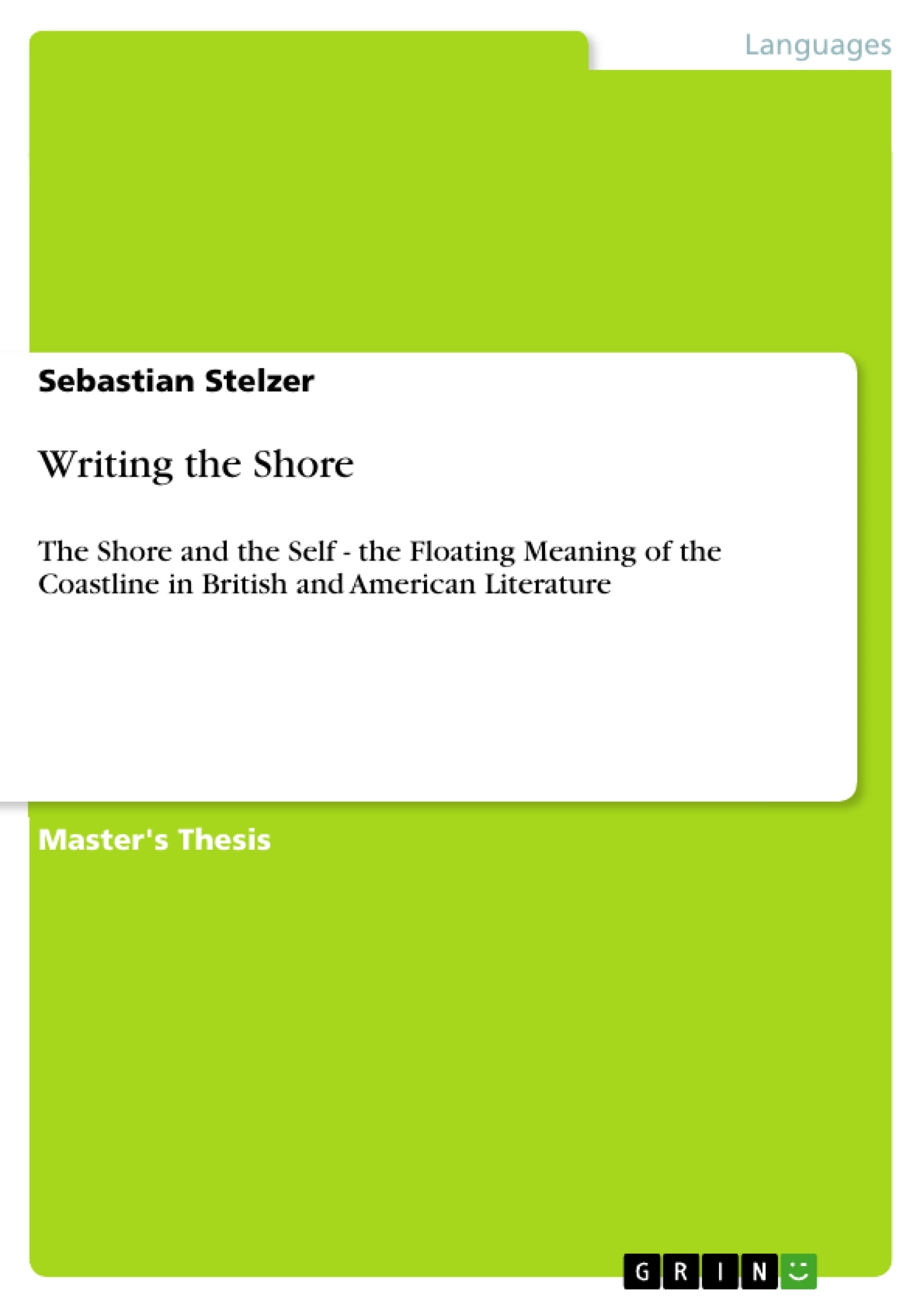The study discusses several theoretical approaches towards an understanding of the shore as a cultural phenomenon. It seeks to combine approaches by Carl Schmitt, Jacques Derrida and Gilles Deleuze and Felix Guattari with narrative texts by Daniel Defoe, Osacar Wilde, Nathaniel Hawthorne and others. In a seperate chapter it offers a short cultural history of the view on the sea as it has shaped oriental perception from biblical and classical texts until today. The main aim is to unravel the mode in which liminal landscapes and liminal characters influence each other as well as an attempt at historizising the narrative constructions that take place on the fascinating and ambivalent border between the liquid and the solid state.
Inhaltsverzeichnis (Table of Contents)
- Introduction
- A Cultural History of the Shore
- The Christian Tradition
- Antiquity and the Sea
- The Invention of the Beach
- A Theory of the Shore
- The Shore in Philosophy
- Carl Schmitt: Land und Meer
- Jacques Derrida: Parages
- Deleuze/Guattari: The Smooth and the Striated
- Spatial Models of Text
- Overview
- Jurij Lotman: The Spatial Structure of the Artistic Text
- Modifications of Lotman's Model
- The Shore in Philosophy
- Writing the Shore
- Signs and the Self
- Daniel Defoe: Robinson Crusoe
- Nathaniel Hawthorne: Footprints on the Sea-Shore
- Dissociations
- Oscar Wilde: The Fisherman and his Soul
- Joseph Conrad: The Secret Sharer
- Alex Garland: The Beach
- Signs and the Self
Zielsetzung und Themenschwerpunkte (Objectives and Key Themes)
This study explores the meaning of the shore as a cultural concept in literary texts, tracing several discursive lines that have shaped its understanding throughout history, philosophy, and British and American literature. It seeks to contribute to the 'new thalassology' and ‘blue cultural studies' by considering the active role of the sea and its opposition to land as a defining factor in textual structure and character interpretation.
- The shore as a cultural concept and its historical development
- The relationship between the self and the environment in the creation of meaning
- The 'floating meaning' of the shore and its philosophical underpinnings
- The significance of coastal topology in literary texts
- The theme of transgression and its consequences in coastal narratives
Zusammenfassung der Kapitel (Chapter Summaries)
- Introduction: This chapter introduces the study's objective and outlines its approach to the shore as a subject of cultural and literary analysis. It connects the study to the larger fields of 'new thalassology' and 'blue cultural studies' and emphasizes the active role of the shore in shaping meaning within literary texts.
- A Cultural History of the Shore: This chapter examines the historical development of the shore as a cultural concept, tracing its significance from the Christian tradition, through antiquity and the sea, to the invention of the beach in modernity.
- A Theory of the Shore: This chapter explores the philosophical underpinnings of the shore by examining the work of Carl Schmitt, Jacques Derrida, and Gilles Deleuze and Felix Guattari. It analyzes their concepts of land and sea as structural models for understanding human perception and meaning-making.
- Writing the Shore: This chapter delves into the ways in which the shore is represented in literary texts, focusing on the relation of the self and its surroundings and the act of transgression. It explores the themes of meaning-making through landscape in Daniel Defoe's *Robinson Crusoe* and Nathaniel Hawthorne's *Footprints on the Sea-Shore*.
- Dissociations: This chapter examines three accounts of coastal dissociation in Oscar Wilde's *The Fisherman and his Soul*, Joseph Conrad's *The Secret Sharer*, and Alex Garland's *The Beach*. It explores how the environmental opposition between land and sea parallels the internal dissociation of the characters.
Schlüsselwörter (Keywords)
This study focuses on the shore as a cultural concept and its representation in literary texts. Key topics include 'new thalassology', 'blue cultural studies', the active role of the sea and land, 'floating meaning', coastal topology, the relationship between the self and the environment, transgression, and dissociation. The study analyzes specific texts such as *Robinson Crusoe*, *Footprints on the Sea-Shore*, *The Fisherman and his Soul*, *The Secret Sharer*, and *The Beach*.
- Quote paper
- Sebastian Stelzer (Author), 2010, Writing the Shore, Munich, GRIN Verlag, https://www.hausarbeiten.de/document/172464


